Uncover the Rich History of Kaihua Temple: A Hidden Gem in China

An Essential Guide to Visiting Kaihua Temple
In This Guide
- An Essential Guide to Visiting Kaihua Temple
- The Rich History and Legends of Kaihua Temple
- Main Highlights: What You Absolutely Can’t Miss
- Planning Your Visit: A Practical Guide
- Tickets: Prices, Booking, and Tips
- How to Get There: A Complete Transportation Guide
- Local Cuisine and Accommodation Nearby
- Frequently Asked Questions
- Final Thoughts on Your Trip
Nestled in the serene landscape of Shanxi province, Kaihua Temple (开化寺) is a historical gem that beckons travelers with its ancient architecture and profound cultural significance. Constructed during the Tang Dynasty, this temple offers a glimpse into China’s rich Buddhist heritage, making it an essential stop for anyone interested in history and spirituality.
As you ascend the long stone steps leading to the temple, you’ll feel a sense of anticipation build. The journey rewards you with breathtaking views of the Youxian Mountains and a tranquil atmosphere that feels worlds away from the bustling modernity of nearby cities. The temple itself is a testament to the architectural prowess of its time, featuring beautifully preserved murals that depict Buddhist tales with exquisite detail.
Visiting Kaihua Temple is not just about witnessing historical structures; it’s an immersive experience that allows you to connect with the spiritual essence of Buddhism in China. Imagine walking through the temple’s three distinct courtyards—the bell tower, the Daxiong Palace, and the performance hall—each built during the Northern Song Dynasty, showcasing the artistry of the era.
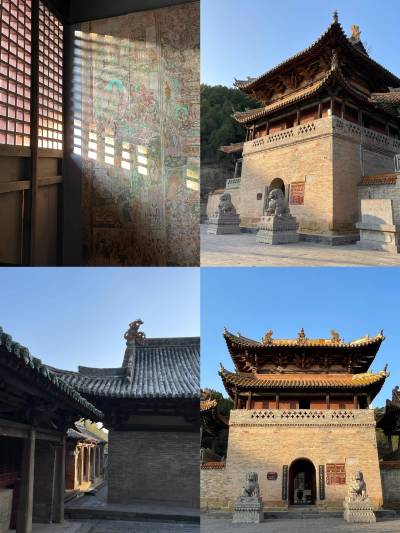
Kaihua Temple.
For those seeking a deeper understanding of Chinese culture, a visit to Kaihua Temple is a journey back in time, an opportunity to reflect on the ideals of peace and enlightenment that Buddhism promotes. Whether you’re an avid history buff, a cultural enthusiast, or simply a traveler in search of tranquility, Kaihua Temple promises an unforgettable experience that will linger long after you’ve left its sacred grounds.
The Rich History and Legends of Kaihua Temple
Nestled amidst the serene landscape of the Youxian Mountains, Kaihua Temple (开化寺) stands as a testament to centuries of history, spirituality, and artistry. This ancient temple, renowned for its tranquil ambiance and rich cultural significance, offers a glimpse into the architectural and religious evolution of China.
A Glimpse into History
Kaihua Temple was originally constructed during the reign of Emperor Zhuangzong of the Tang Dynasty, around the 10th century. Initially named Qingliangruo, it served as a place of worship and reflection. The temple underwent a significant transformation during the Song Dynasty when it was renamed Kaihua Temple. This period marked a flourishing of Buddhist culture in China, and the temple became a prominent site for religious activities.

Kaihua Temple.
The existing structures within the temple complex were primarily built in 1073 during the Northern Song Dynasty. The layout consists of several courtyards, with the bell tower at the entrance, followed by the Daxiong Palace at the heart of the complex, and a performance hall that showcases traditional Buddhist rituals. Notably, the Daxiong Palace retains its original Dougong (a traditional Chinese architectural element) design from the Song Dynasty, offering visitors a rare glimpse into the architectural practices of that era.
Artistic Treasures
One of the most captivating features of Kaihua Temple is its stunning murals that adorn the walls of the Daxiong Palace. These paintings, crafted in 1096, depict various Buddhist stories and teachings with exceptional detail and skill. The artistry reflects the high level of craftsmanship that characterized the Northern Song era, making it a significant cultural artifact. Additionally, the temple houses ancient steles and three stone tomb towers dedicated to eminent monks, further enriching its historical narrative.
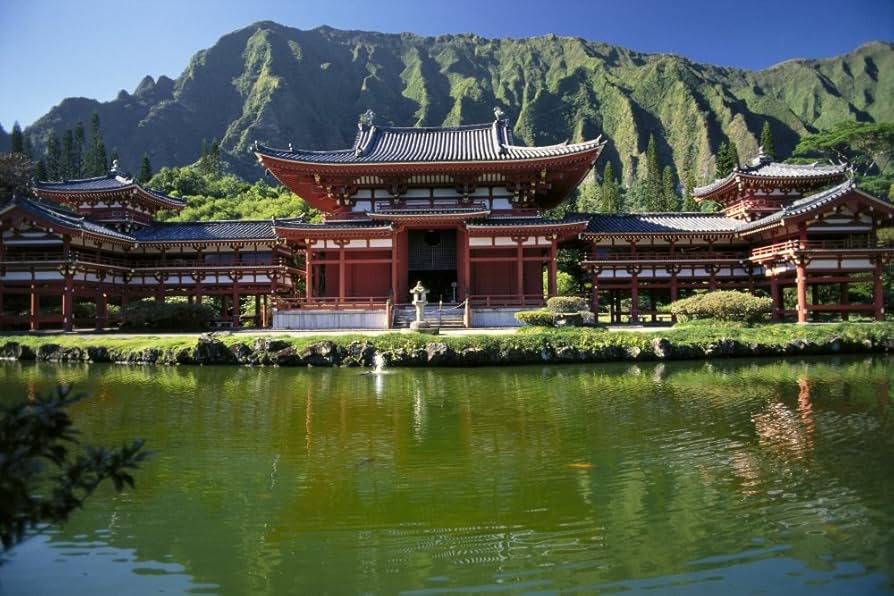
Kaihua Temple.
Legends and Folklore
Kaihua Temple is steeped in local legends that enhance its mystical allure. One popular tale speaks of a wandering monk who, upon discovering the site, was so captivated by its beauty and tranquility that he chose to meditate there for several years. It is said that during this time, he attained enlightenment and left behind a series of teachings which are still revered by practitioners today. This legend underscores the temple’s role as a center for spiritual exploration and transformation.
Another tale involves the temple’s connection to the famous Tang Dynasty poet Li Bai, who is believed to have visited the temple during his travels. It is said that he composed profound verses inspired by the temple’s serene environment, intertwining his literary genius with the temple’s spiritual essence.

Kaihua Temple.
Access and Experience
Visiting Kaihua Temple is not just a journey through history; it is also a chance to engage with nature. Located approximately 17 kilometers northeast of Gaoping County, reaching the temple involves a scenic hike up a long stone staircase, leading to a peaceful retreat amidst lush greenery. The site remains relatively less crowded, allowing visitors to fully immerse themselves in the tranquil atmosphere. The temple is open daily, providing free entry, though it is recommended to check visiting hours ahead of time.
Conclusion
Kaihua Temple is more than just an ancient structure; it is a living narrative of China’s rich history, artistry, and spirituality. Whether you are captivated by its architectural elegance, enchanted by its legends, or seeking a moment of reflection in nature, a visit to Kaihua Temple promises a profound experience that resonates with the essence of Chinese culture.
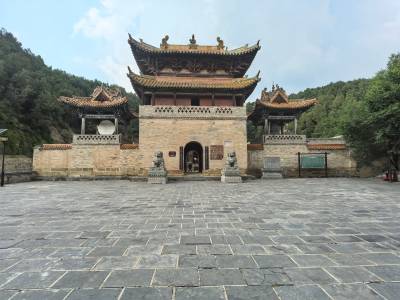
Kaihua Temple.
Main Highlights: What You Absolutely Can’t Miss
Kaihua Temple, nestled in the serene Youxian Mountains of Gaoping County, is a treasure trove of history and culture that beckons travelers with its rich heritage and breathtaking surroundings. Here are the main highlights that you absolutely can’t miss during your visit.
Historical Significance
- Ancient Origins: Originally built during the Tang Dynasty (specifically, under Emperor Zhuangzong), Kaihua Temple was known as Qingliangruo. It was later renamed during the Song Dynasty, solidifying its place as one of Shanxi’s most revered ancient temples.
- Architectural Marvel: The temple complex features structures dating back to the 11th century, including the impressive Daxiong Palace, which retains the architectural style of the Northern Song Dynasty. The intricate Dougong (a traditional Chinese structural element) is a testament to the craftsmanship of the era.
Stunning Artwork
- Buddhist Murals: Inside the Daxiong Palace, visitors will be awed by the exquisite murals that depict various Buddhist stories. These artworks, painted in 1096, showcase fine brushwork and superb artistic skills, making them a highlight for art enthusiasts and history buffs alike.
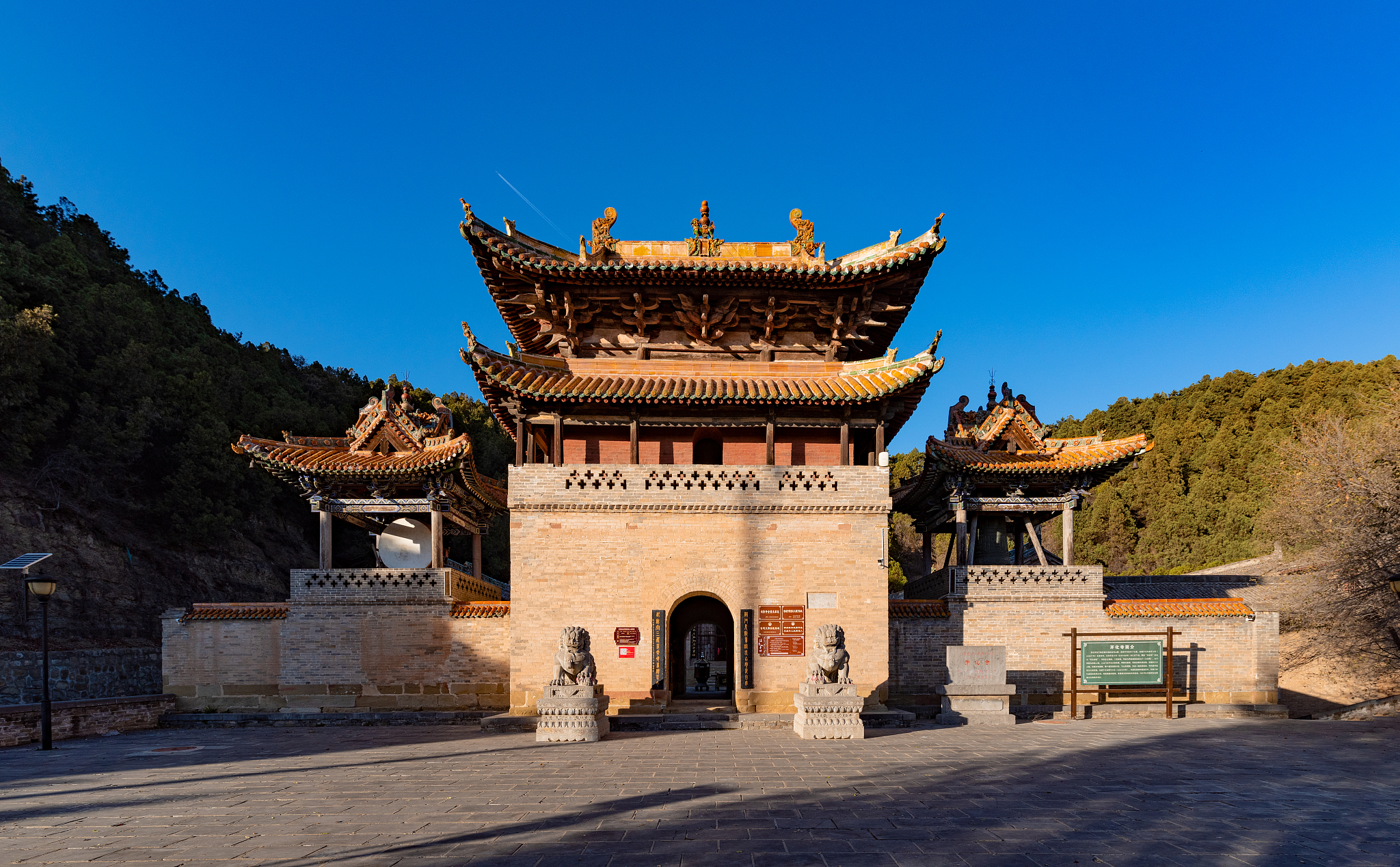
Kaihua Temple.
Scenic Location
- Breathtaking Views: Located 17 kilometers northeast of Gaoping, the temple is set against the backdrop of the majestic Shili Mountains. The tranquil surroundings offer a perfect escape from the hustle and bustle of city life, making it an ideal spot for reflection and serenity.
Unique Features
- Bell Tower and Performance Hall: The temple complex includes a bell tower and a performance hall, both of which enhance the spiritual ambiance of the site. The sound of the bell resonating through the mountains adds to the ethereal experience of visiting Kaihua Temple.
- Stone Tomb Towers: Outside the temple, three stone tomb towers of eminent monks stand as monuments to the temple’s rich religious history, providing insights into the lives of those who contributed to its legacy.
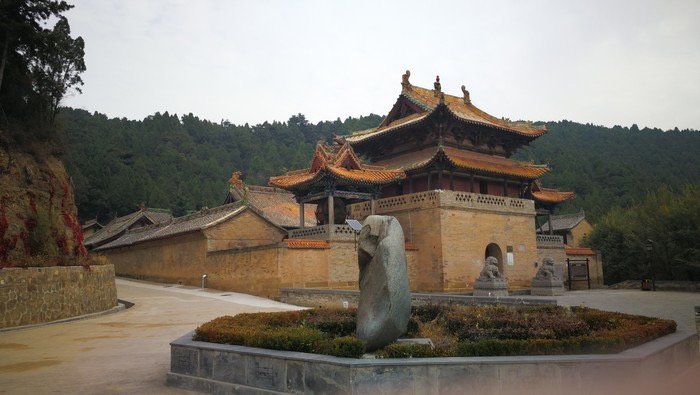
Kaihua Temple.
Visitor Experience
- Quiet Retreat: Unlike many tourist destinations, Kaihua Temple remains relatively uncrowded, allowing visitors to explore its beauty in peace. However, be prepared for a bit of a hike to reach the temple, as it is accessed via a long stone staircase—an adventure that adds to its charm.
- Free Admission: One of the best parts about Kaihua Temple is that entry is free, making it an accessible destination for all travelers looking to immerse themselves in Chinese culture and history.
Practical Tips
- Best Time to Visit: The temple is open daily from 8:00 AM to 5:00 PM, providing ample opportunity to explore its wonders. Early morning or late afternoon visits may offer the most picturesque lighting for photography.
- Getting There: While public transport to Gaoping is available, consider chartering a taxi from the bus station for the final leg of your journey, as the temple is somewhat off the beaten path.
- What to Bring: Wear comfortable shoes suitable for hiking, as the trek to the temple involves climbing. Don’t forget to bring water and snacks, as there are limited facilities on-site.
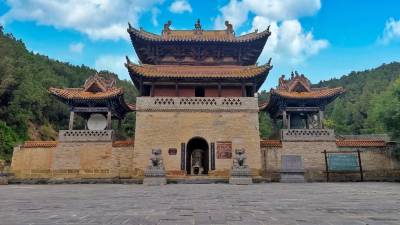
Kaihua Temple.
In summary, Kaihua Temple stands as a beacon of history, artistry, and tranquility in the heart of Shanxi. Whether you’re an avid historian, a lover of art, or simply seeking a peaceful retreat, this temple is an essential stop during your exploration of China’s rich cultural landscape.
Planning Your Visit: A Practical Guide
Discovering Kaihua Temple: Your Practical Guide
Visiting Kaihua Temple (开化寺) in Gaoping, Shanxi, offers a unique glimpse into China’s rich history and spiritual heritage. Nestled in the serene Youxian Mountains, this ancient temple is a treasure trove of architectural beauty and cultural significance. Here’s everything you need to know to plan your visit.
Getting There
Location: Kaihua Temple is located about 17 kilometers northeast of Gaoping County. To reach the temple, you can take a bus from Jincheng to Gaoping and then hire a taxi or charter a vehicle for the final stretch to the temple.

Kaihua Temple.
Transportation Tips:
– Public Transport: Buses from Jincheng to Gaoping run regularly, but services may be limited in the evening.
– Taxi Services: Taxis are available in Gaoping, but it’s advisable to arrange your return trip in advance, as rides may be scarce.
Opening Hours
Kaihua Temple is open daily from 8:00 AM to 5:00 PM. It’s important to note that the temple can be locked outside of these hours, so plan your visit accordingly.

Kaihua Temple.
Admission Fees
Entry: Admission to Kaihua Temple is free. This makes it an accessible destination for all travelers interested in exploring China’s spiritual and historical sites.
What to See
The temple’s architecture dates back to the Song Dynasty, with notable structures including:
– Daxiong Palace: The main hall, renowned for its exquisite murals depicting Buddhist tales, painted during the Northern Song Dynasty.
– Bell Tower: A striking feature that welcomes visitors as they enter the temple grounds.
– Stele Pavilion: Home to ancient steles that chronicle the history of the temple and its significance.
Recommended Visit Duration
Plan to spend approximately 1 hour exploring the temple to fully appreciate its beauty and historical context. If you are also keen on hiking, consider allocating additional time for the surrounding trails.
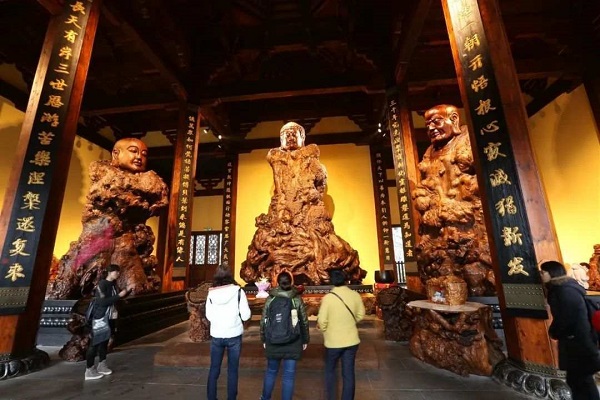
Kaihua Temple.
Hiking Information
For those looking to combine their visit with a hike:
– Trail Overview: The hike to the temple involves a series of stone steps and climbing, which can take about 4.5 hours round trip for novice hikers.
– Start Point: Begin your hike at the right-hand road leading up to the temple.
– Trail Conditions: The path can be narrow and muddy in places, especially after rain, so wear non-slip shoes and appropriate clothing.
Facilities
- Vegetarian Meals: The temple offers vegetarian meals at noon, providing a delightful way to sample local cuisine after your hike.
- Rest Areas: There are limited facilities on-site, so be sure to bring your own snacks and water.
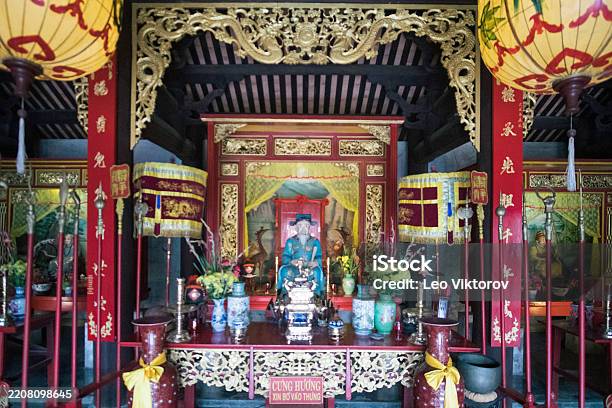
Kaihua Temple.
What to Bring
- Clothing: Dress in layers, as the weather can change rapidly in mountainous areas. A waterproof jacket is advisable due to the humidity and possible mist at higher elevations.
- Personal Items: Bring along a garbage bag for your waste, as there are no disposal facilities on the mountain.
- Camera: Capture the stunning views and intricate details of the temple’s architecture.
Nearby Attractions
While in the area, consider exploring other significant sites such as:
– Gaoping Emperor Yan Mausoleum: A short distance away, this site offers historical insights into Chinese emperors.
– Yangtoushan Cave: Known for its natural beauty, this cave is ideal for those looking to explore more of the region’s geological wonders.
Accommodation
If you’re planning to stay overnight, Jincheng is the nearest city with various hotel options. The Jincheng Fengcheng Health Center is highly recommended for its luxury and proximity to local attractions.
Conclusion
Kaihua Temple is not just a place of worship; it’s a journey through time, reflecting the artistry and spirituality of ancient China. Whether you are a history buff, a hiking enthusiast, or simply seeking a peaceful retreat, this temple promises an enriching experience. Enjoy your visit!
Tickets: Prices, Booking, and Tips
Exploring Kaihua Temple: Ticket Information and Visitor Tips
Kaihua Temple, nestled in the scenic Youxian Mountains of Gaoping, Shanxi, offers a captivating glimpse into China’s rich history and architectural beauty. As you plan your visit to this ancient site, here’s what you need to know about ticketing, booking, and essential tips for an enjoyable experience.
Admission Details
-
Ticket Price: Entrance to Kaihua Temple is free of charge. This makes it an accessible destination for travelers eager to explore its historical and cultural significance without the burden of entry fees.
-
Parking Fees: If you’re arriving by car, be aware that there is a parking fee of 10 RMB. This nominal charge ensures a convenient spot for your vehicle while you explore the temple grounds.
Visiting Hours
Kaihua Temple is open to visitors every day of the week:
– Hours of Operation: 8:00 AM – 5:00 PM
Keep in mind that the temple may be closed during inclement weather or special occasions, so it’s advisable to check for any alerts before your visit.
Booking and Accessibility
While no advance booking is required for entry, it’s recommended to arrive early, especially on weekends or public holidays, when visitor numbers can increase. The temple is located about 17 kilometers northeast of Gaoping County, and public transport options may be limited. Here are some tips to ensure smooth travel:
-
Transportation: If you’re coming from Jin City, take a bus to Gaoping. From there, consider chartering a taxi to reach the temple, as public transport options may not be frequent.
-
Self-Drive: If you’re driving, be prepared for narrow roads once you enter the mountainous area. However, the road conditions are generally good.
Visitor Tips
-
Hiking Preparations: The approach to Kaihua Temple involves a hike up a long stone staircase. Wear non-slip shoes to navigate the climb safely, as parts of the trail can be muddy.
-
Weather Considerations: The climate can be humid, especially at higher altitudes. Bring a light waterproof jacket or layers to stay comfortable, as the weather can change quickly in the mountains.
-
Bring Snacks: There are limited facilities for food and drink, so consider packing some snacks. The temple’s canteen offers vegetarian meals around noon, but options may be sparse outside of that time.
-
Respect Nature: There are no trash bins on the mountain, so it’s essential to bring your own garbage bags and take your litter back with you, preserving the natural beauty of the area.
-
Photography Tips: The foggy mountain backdrop creates stunning photographic opportunities. Bright, colorful clothing can enhance your photos against the misty landscape.
By following these guidelines, your visit to Kaihua Temple can be both enlightening and enjoyable, allowing you to immerse yourself in the serene atmosphere of this historical site while appreciating its architectural grandeur and cultural significance.
How to Get There: A Complete Transportation Guide
Navigating Your Way to Kaihua Temple
Visiting Kaihua Temple (开化寺) in Gaoping, Shanxi, is a journey steeped in history, culture, and natural beauty. As one of the region’s renowned ancient temples, it can be a bit challenging to reach, but the experience is well worth the effort. Here’s how to get there, whether you prefer public transportation or driving.
Getting to Gaoping
The nearest major city to Gaoping is Jincheng, which serves as a convenient base for your trip to Kaihua Temple. Here are your options for reaching Gaoping:
- By Air: The closest airports are Changzhi Airport (CIH) and Jincheng Airport. From either airport, you can take a taxi or arrange for a private car to reach Gaoping.
- By Train: Jincheng has a railway station with connections to major cities. From Jincheng, you can take a bus or taxi to Gaoping.
- By Bus: Long-distance buses frequently run from cities like Taiyuan and Jincheng to Gaoping. The bus terminal in Gaoping is well-connected to other areas.
From Gaoping to Kaihua Temple
Once you arrive in Gaoping, you’ll need to make your way to Kaihua Temple, located about 17 kilometers northeast of the city, nestled in the picturesque Youxian Mountains. Here’s how to navigate the final leg of your journey:
- By Taxi: The most straightforward option is to hire a taxi from Gaoping. Given the distance, it’s advisable to agree on a fare with the driver beforehand or ensure the meter is used. This option is particularly convenient if you’re traveling in a group.
- By Bus: Local buses may operate routes towards the temple, but schedules can be infrequent and inconsistent. It’s best to verify the current bus routes and times with locals or your hotel.
- Self-Driving: If you prefer to drive, renting a car in Jincheng is an excellent option. The roads leading to Kaihua Temple are generally in good condition, although some areas may be narrow. Parking is available at the temple, but be prepared for the last stretch of the journey, which involves climbing a series of stone steps.
Hiking to the Temple
For those looking for a bit of adventure, you can opt for a hike to Kaihua Temple. The hike starts about 1 kilometer from the temple entrance and generally takes about 4.5 hours round trip. Here are some tips for hiking:
- Wear Appropriate Footwear: Non-slip shoes are a must, as the path can become muddy and steep.
- Bring Supplies: Since there are no shops on the mountain, carry snacks and water. A canteen is available at the temple for vegetarian meals at noon.
- Prepare for Weather Changes: The temple is located at a high elevation where fog can roll in quickly, so a light jacket is recommended.
Inside the Temple Grounds
Kaihua Temple is open daily from 8:00 AM to 5:00 PM, and admission is free. Once you arrive, take your time exploring the intricately painted walls and the serene grounds, which date back to the Song Dynasty. It’s a peaceful retreat that allows you to connect with the rich history of Chinese Buddhism.
By planning your transportation thoughtfully, you can ensure a smooth and enjoyable visit to Kaihua Temple, immersing yourself in both the natural beauty of Shanxi and the profound tranquility of this ancient site. Happy travels!
Local Cuisine and Accommodation Nearby
Nestled in the scenic Youxian Mountains, Kaihua Temple (开化寺) offers not only a glimpse into ancient Chinese architecture and Buddhist culture but also an opportunity to savor local delicacies and enjoy comfortable accommodations nearby. Here’s a guide to help you experience the best of Gaoping.
Local Cuisine
When visiting Kaihua Temple, indulge in the rich culinary traditions of Shanxi, renowned for its unique flavors and hearty fare. Here are some local dishes and nearby eateries that should not be missed:
-
Shanxi Noodles: A staple in the region, these hand-pulled noodles are typically served in a rich broth or stir-fried with seasonal vegetables and meats. Look for restaurants featuring Dao Xiao Mian (刀削面), the famed knife-cut noodles.
-
Jincheng Roast Duck: This local specialty rivals Beijing’s famous dish, offering succulent meat with crispy skin. Enjoy it with traditional side dishes like pancakes and hoisin sauce.
-
Vegetarian Meals at Kaihua Temple: For a serene dining experience, the temple offers vegetarian meals around noon. Enjoy a simple yet nourishing spread of seasonal vegetables, rice, and tofu, reflecting the temple’s peaceful ambiance.
-
Local Snacks: Don’t miss trying Fen Pi (粉皮), a type of rice noodle, and Yang Rou Chuan (羊肉串), skewered lamb grilled to perfection. These can often be found in local markets or street vendors near the temple.
Recommended Accommodations
For those looking to stay overnight or for a few days, Gaoping and the nearby city of Jincheng provide several comfortable lodging options:
1. Jincheng Fengcheng Health Center
- Rating: 5-Star
- Overview: This luxurious hotel is set in a serene environment with lush gardens and top-notch facilities. It’s ideal for travelers seeking comfort and modern amenities.
- Highlights:
- Spacious rooms equipped with smart technology.
- On-site health and wellness facilities.
- Proximity to attractions like Baima Temple Mountain and Longma Lake.
2. Gaoping Hotel
- Rating: 4-Star
- Overview: A well-reviewed hotel offering comfortable accommodations at reasonable prices. Perfect for families and groups.
- Highlights:
- Central location with easy access to local attractions.
- On-site dining options featuring local cuisine.
- Family-friendly amenities.
3. Local Guesthouses
- Overview: For a more authentic experience, consider staying in a local guesthouse. These often provide a cozy atmosphere and a chance to connect with the local culture.
- Highlights:
- Personalized service and home-cooked meals.
- Opportunities to engage with local communities.
Practical Tips
-
Booking in Advance: Especially during peak tourist seasons, it’s recommended to book your accommodation in advance to secure the best rates and availability.
-
Transportation: While public transport is available, renting a car or hiring a taxi from Gaoping can make your journey to Kaihua Temple more convenient.
-
Vegetarian Options: If you follow a vegetarian diet, inquire at local restaurants about their options, as many places offer vegetarian dishes, reflecting the Buddhist influence of the temple.
With its rich historical backdrop and delicious local fare, a visit to Kaihua Temple promises not only cultural enrichment but also a delightful culinary journey. Whether you choose to stay in a luxurious hotel or a quaint guesthouse, the warmth of Shanxi hospitality will surely enhance your experience.
Frequently Asked Questions
Frequently Asked Questions about Kaihua Temple (开化寺)
1. What are the visiting hours for Kaihua Temple?
Kaihua Temple is open to visitors daily from 8:00 AM to 5:00 PM. Make sure to arrive before closing time to fully enjoy the serene atmosphere and historical significance of the temple.
2. Is there an admission fee to enter Kaihua Temple?
No, entry to Kaihua Temple is free of charge. This allows you to explore the ancient architecture and stunning murals without any cost.
3. How do I get to Kaihua Temple from Gaoping?
To reach Kaihua Temple, you can take a bus from Jincheng City to Gaoping. Once in Gaoping, it is recommended to hire a taxi or charter a vehicle, as public transport options are limited. The temple is located about 17 kilometers northeast of Gaoping, nestled in the beautiful Youxian Mountains.
4. What is the historical significance of Kaihua Temple?
Originally built during the Tang Dynasty, the temple was renamed during the Song Dynasty. It features exquisite architectural elements, including the Daxiong Palace and rich murals depicting Buddhist stories. The temple is a notable example of ancient Chinese religious architecture and art, making it a treasure of Shanxi Province.
5. What should I wear when visiting the temple?
Given the temple’s mountainous location and the hiking involved to reach it, it’s advisable to wear non-slip shoes and comfortable clothing. Layers are recommended as the weather can change quickly, and the high humidity near the top may make it feel cooler.
6. Are there any facilities available at the temple?
While Kaihua Temple offers a peaceful and reflective environment, facilities are limited. There is a canteen that provides vegetarian meals around noon, but be prepared to bring your own snacks and water, as there are no shops on-site.
7. What activities are available near Kaihua Temple?
Visitors can enjoy hiking in the surrounding mountains, exploring other nearby cultural heritage sites, and taking in the natural beauty of the landscape. The area is perfect for photography, especially with its foggy mountain views.
8. Is it suitable for families with children?
While families can visit, be aware that the hike to the temple involves climbing, which may be challenging for younger children. It’s best for families with children to ensure they are fit for the hike, and to bring along necessary supplies for a safe and enjoyable trip.
Final Thoughts on Your Trip
As you wrap up your journey to Kaihua Temple, allow yourself a moment to reflect on the rich tapestry of history and culture woven within its ancient walls. This sacred site, nestled amidst the serene landscapes of the Youxian Mountains, serves as a reminder of China’s profound spiritual heritage and architectural ingenuity.
A Journey Through Time
Visiting Kaihua Temple is not just about witnessing the remnants of the past; it’s an opportunity to immerse yourself in a living narrative that dates back to the Tang Dynasty. The intricate murals and the meticulously preserved structures invite you to connect with the stories of the monks who once walked these halls. As you stand before the Daxiong Palace, you can almost hear the whispers of history echoing through the ages.
Embrace the Tranquility
The tranquility of the temple grounds offers a respite from the hustle of modern life. Whether you choose to meditate in the quiet gardens or simply admire the breathtaking views, Kaihua Temple allows you to recharge your spirit. The journey to reach the temple itself, with its winding stone steps, is a metaphor for the ascent to enlightenment—a reminder that the path to understanding often requires effort and contemplation.
Practical Tips for Your Visit
- Timing: Aim to visit during the early hours when the temple is less crowded, allowing for a more personal experience.
- Accessibility: Be prepared for some hiking; sturdy footwear is essential for the stone paths leading to the temple.
- Respect the Space: As a place of worship, maintain a respectful demeanor and consider bringing along a small bag for any litter you may generate, as facilities are limited.
Final Thoughts
In leaving Kaihua Temple, carry with you the lessons learned from its storied past and the peaceful moments spent in its embrace. This temple is not merely an attraction; it is a portal to understanding the essence of Chinese culture and spirituality. Each visit can inspire a deeper appreciation for the art, history, and philosophy that define this remarkable nation.
As you continue your travels through China, let the spirit of Kaihua Temple guide you toward exploration and understanding, reminding you that every destination holds a story waiting to be discovered. Safe travels!